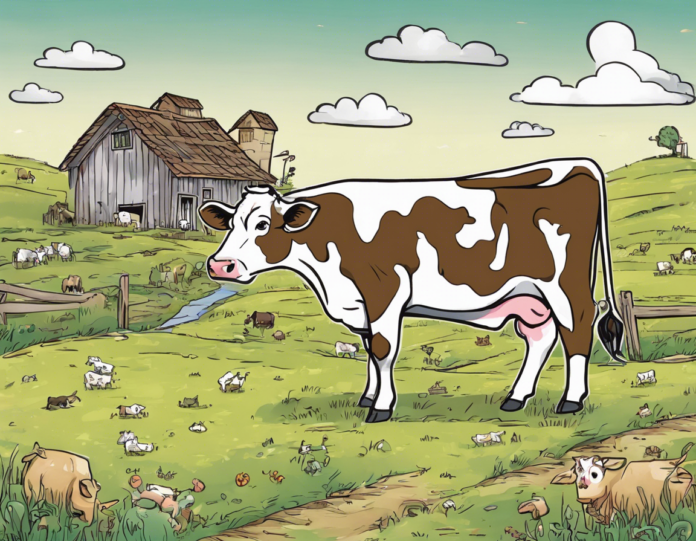Cows are fascinating creatures that have been an integral part of human society for centuries. They provide us with milk, meat, and leather, and play a significant role in various cultures and traditions around the world. One of the key factors that contribute to the health and well-being of cows is their living environment. In this comprehensive guide, we will explore where cows live, focusing on different types of housing and management practices that are commonly used to ensure the comfort and welfare of these animals.
Types of Cow Housing
1. Pasture-Based Systems
Pasture-based systems are one of the most common and traditional forms of cow housing. In this system, cows are allowed to graze on open fields or pastures, where they have access to fresh grass and other vegetation. Pasture-based systems are beneficial for cow health as they allow for natural grazing behavior and exercise, which can contribute to better overall well-being.
2. Barns and Stalls
Barns and stalls are another common type of cow housing, especially in areas where pasture land is limited or during inclement weather. Barns provide shelter from extreme temperatures, wind, and rain, and allow for easier management of cows, especially during calving and milking.
3. Free-Range Systems
Free-range systems are becoming increasingly popular, especially for organic and grass-fed cattle operations. In free-range systems, cows have access to both pasture and barns or shelters, allowing them to move freely and exhibit natural behaviors such as grazing, resting, and socializing.
Key Considerations for Cow Housing
1. Space and Ventilation
Proper ventilation and ample space are essential for cow housing to prevent respiratory issues and ensure air quality. Overcrowding can lead to stress, injuries, and the spread of diseases among cows.
2. Bedding and Comfort
Cows require comfortable bedding, such as straw or sawdust, to rest and ruminate. Comfortable resting areas contribute to better cow health and productivity.
3. Feeding and Watering Facilities
Access to clean water and a balanced diet is crucial for the health and productivity of cows. Proper feeding and watering facilities should be available in all types of cow housing.
4. Safety and Security
Cow housing should be designed to ensure safety and security for the animals, protecting them from predators, diseases, and injuries. Fencing, lighting, and regular inspections are necessary to maintain a safe environment for cows.
Management Practices for Cow Housing
1. Regular Cleaning and Maintenance
Regular cleaning and maintenance of cow housing facilities are essential to prevent the buildup of waste and harmful bacteria that can affect the health of cows. Proper waste management practices should be in place to ensure a clean and hygienic environment.
2. Disease Prevention and Control
Implementing biosecurity measures, such as vaccination programs and quarantine protocols, can help prevent the spread of diseases among cows in housing facilities. Regular health checks and monitoring can also aid in early detection and treatment of health issues.
3. Monitoring and Record-Keeping
Monitoring the health and behavior of cows in housing facilities is important for early identification of any issues. Keeping detailed records of feeding, milking, and health events can help in tracking performance and identifying trends over time.
4. Behavioral Enrichment
Providing enrichment activities, such as scratching posts, hanging toys, or socialization opportunities, can help prevent boredom and improve the well-being of cows in housing. Enrichment activities stimulate natural behaviors and reduce stress levels.
Frequently Asked Questions (FAQs)
1. Why is cow housing important?
Cow housing is important for providing shelter, comfort, and security to cows, ensuring their health and well-being, and maximizing productivity.
2. How do you prevent heat stress in cows housed in barns?
Proper ventilation, access to clean water, shade, and cooling systems can help prevent heat stress in cows housed in barns during hot weather.
3. What are the advantages of pasture-based systems for cows?
Pasture-based systems allow cows to exhibit natural grazing behaviors and access a diverse range of plants, leading to improved health, welfare, and quality of dairy and meat products.
4. How often should cow housing facilities be cleaned?
Cow housing facilities should be cleaned regularly to remove waste, bedding, and dirt that can harbor pathogens and compromise the health of cows. Daily cleaning is recommended, with thorough deep cleaning periodically.
5. How can I improve cow comfort in barns or stalls?
Providing soft bedding, adequate space for movement, proper ventilation, and comfortable resting areas can improve cow comfort in barns or stalls, enhancing their overall well-being and productivity.

